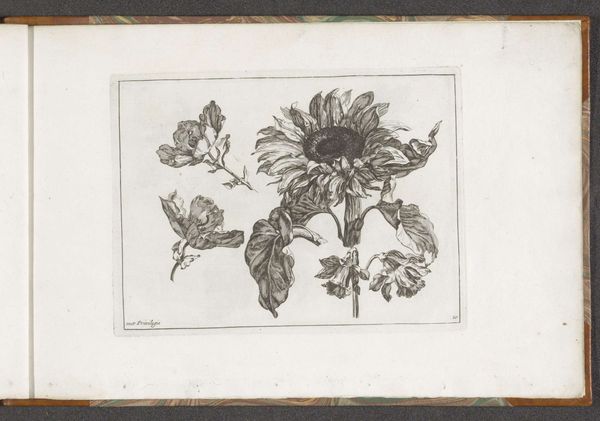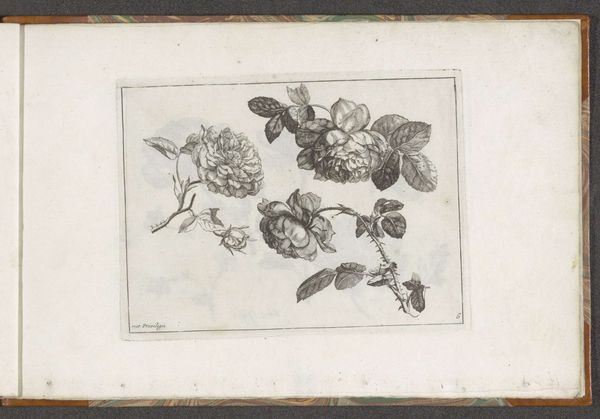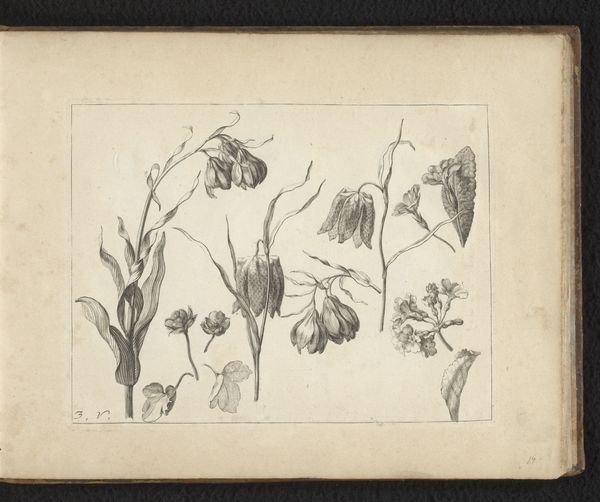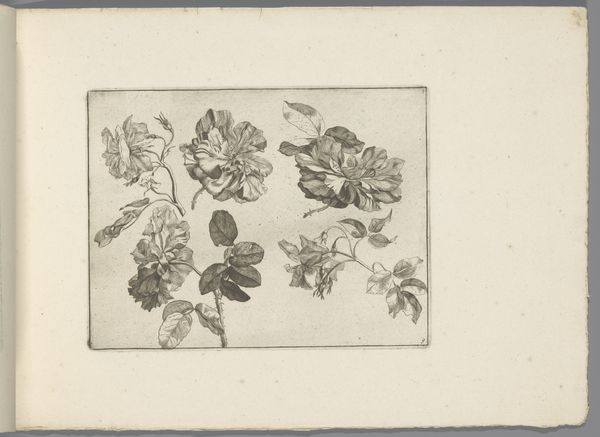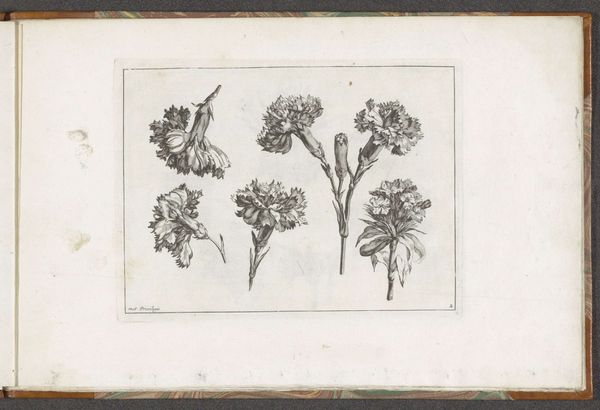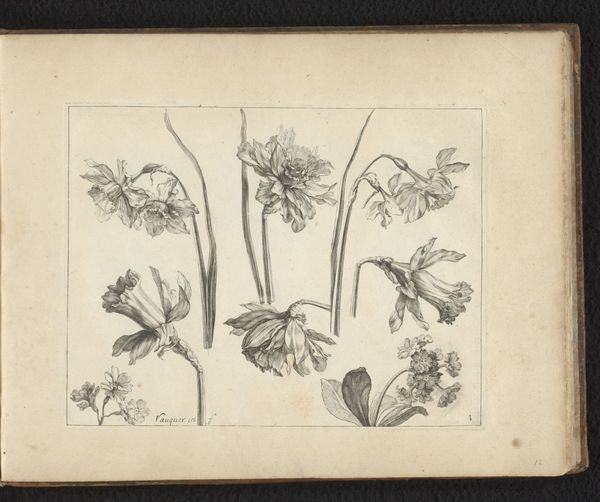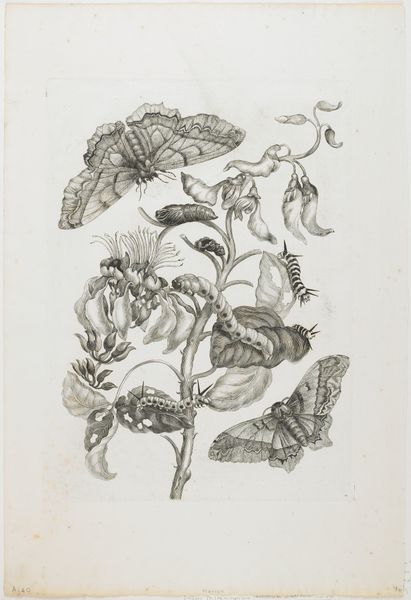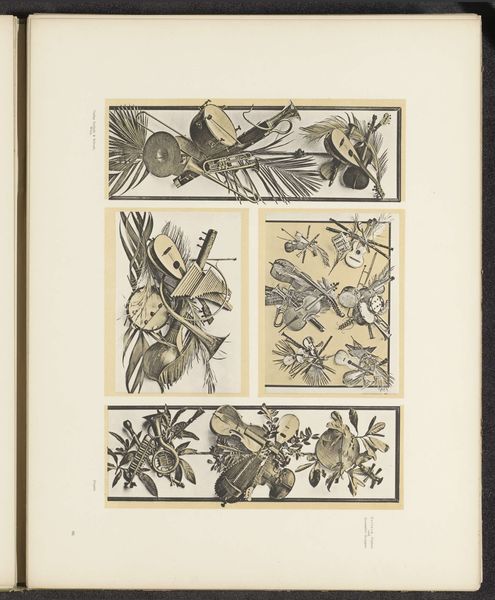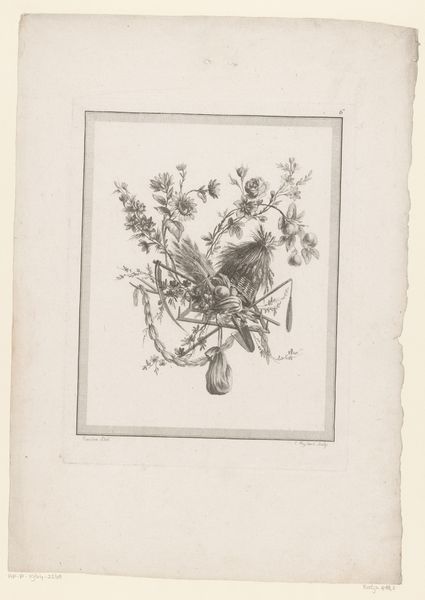
drawing, print, etching, paper, ink
#
drawing
#
baroque
# print
#
etching
#
flower
#
paper
#
ink
Dimensions: height 141 mm, width 188 mm
Copyright: Rijks Museum: Open Domain
Curator: Looking at this, I’m struck by its delicacy; almost a fleeting impression. There's a melancholic, wistful feel to this arrangement. Editor: Indeed. This drawing, made with ink, etching, and print on paper, goes by "Kievitsbloemen en andere bloemen"—or, "Fritillaries and other flowers". It’s an artwork made by an anonymous artist during the period of 1630 to 1718. The image is a print that now resides in the collection of the Rijksmuseum. Curator: An anonymous artist! In a way, that emphasizes the image as a collection of archetypes of flowers—standing in for universal ideas of beauty, decay, ephemerality, you know? The linear qualities give it a kind of scientific illustration vibe—but that dark ink imbues the picture with mood. Editor: Absolutely. Considering its creation period within the Baroque era, this floral representation invites examination. One may argue that these flowers represent societal perspectives toward the feminine in that era: beautiful and ornamental, yet silent and passively displayed for admiration. The lack of authorial claim allows one to consider how cultural perception is projected onto nature, stripping away any original or indigenous meanings to replace it with pure display value, as such reflecting power relations within gender and social strata. Curator: Mmm, yeah. And thinking about its monochrome nature and its position, almost pinned or pressed into the page like a specimen in a botanical album… maybe that amplifies that sense of observation but also control. What are the power dynamics inherent when we claim the authority to define natural forms? It also brings a stillness; these plants don't exist within any broader ecosystem—but isolated from time. Editor: It's curious to ponder the intent behind rendering these flowers this way. It evokes questions surrounding the ownership of nature and gender constructs, especially within historical class dynamics. This work also offers an insightful snapshot of artistic expression unbound by a single identity, promoting reflections regarding diverse cultural values attached to the era and still echoing now. Curator: I find this image sparks an odd combination of contemplation and discomfort. There's undeniable beauty but an unshakeable sense of the latent violence of imposing purely aesthetic and hierarchical meaning. Editor: Yes, it offers more than just botanical illustration, prompting a critical understanding about ourselves and the long arc of these flowers' representation.
Comments
No comments
Be the first to comment and join the conversation on the ultimate creative platform.


